- Home
- Kathy Reichs
Death Du Jour Page 2
Death Du Jour Read online
Page 2
“C’est ça.”
I moved my finger to the portion of the diagram corresponding to the southwest corner of the church. “And these are the most recent graves. The markers we found are consistent with your records.”
“Yes. Those were the last, just before the church was abandoned.”
“It was closed in 1914.”
“Nineteen fourteen. Yes, 1914.” He had an odd way of repeating words and phrases.
“Élisabeth died in 1888?”
“C’est ça, 1888. Mère Aurélie in 1894.”
It didn’t make sense. Evidence of the graves should be there. It was clear that artifacts from the 1840 burials remained. A test in that area had produced wood fragments and bits of coffin hardware. In the protected environment inside the church, with that type of soil, I thought the skeletons should be in pretty good shape. So where were Élisabeth and Aurélie?
The old nun shuffled in with a tray of coffee and sandwiches. Steam from the mugs had fogged her glasses, so she moved with short, jerky steps, never lifting her feet from the floor. Father Ménard rose to take the tray.
“Merci, Sister Bernard. This is very kind. Very kind.”
The nun nodded and shuffled out, not bothering to clear her lenses. I watched her as I helped myself to coffee. Her shoulders were about as broad as my wrist.
“How old is Sister Bernard?” I asked, reaching for a croissant. Salmon salad and wilted lettuce.
“We’re not exactly sure. She was at the convent when I first started coming here as a child, before the war. World War II, that is. Then she went to teach in the foreign missions. She was in Japan for a long time, then Cameroon. We think she’s in her nineties.” He sipped his coffee. A slurper.
“She was born in a small village in the Saguenay, says she joined the order when she was twelve.” Slurp. “Twelve. Records weren’t so good in those days in rural Quebec. Not so good.”
I took a bite of sandwich then rewrapped my fingers around the coffee mug. Delicious warmth.
“Father, are there any other records? Old letters, documents, anything we haven’t looked at?” I wriggled my toes. No sensation.
He gestured to the papers littering the desk, shrugged. “This is everything Sister Julienne gave me. She is the convent archivist, you know.”
“Yes.”
Sister Julienne and I had spoken and corresponded at length. It was she who had initially contacted me about the project. I was intrigued from the outset. This case was very different from my usual forensic work involving the recently dead who end up with the coroner. The archdiocese wanted me to exhume and analyze the remains of a saint. Well, she wasn’t really a saint. But that was the point. Élisabeth Nicolet had been proposed for beatification. I was to find her grave and verify that the bones were hers. The saint part was up to the Vatican.
Sister Julienne had assured me that there were good records. All graves in the old church were cataloged and mapped. The last burial had taken place in 1911. The church was abandoned and sealed in 1914 following a fire. A larger one was built to replace it, and the old building was never used again. Closed site. Good documentation. Piece of cake.
So where was Élisabeth Nicolet?
“It might not hurt to ask. Perhaps there’s something Sister Julienne didn’t give you because she thought it unimportant.”
He started to say something, changed his mind. “I’m quite sure she’s given me everything, but I’ll ask. Sister Julienne has spent a great deal of time researching this. A great deal.”
I watched him out the door, finished my croissant, then another. I crossed my legs, tucked my feet under me, and rubbed my toes. Good. Feeling was returning. Sipping my coffee, I lifted a letter from the desk.
I’d read it before. August 4, 1885. Smallpox was out of control in Montreal. Élisabeth Nicolet had written to Bishop Édouard Fabre, pleading that he order vaccinations for parishioners who were well, and use of the civic hospital by those who were infected. The handwriting was precise, the French quaint and outdated.
The Convent Notre-Dame de l’Immaculée-Conception was absolutely silent. My mind drifted. I thought of other exhumations. The policeman in St-Gabriel. In that cemetery the coffins had been stacked three deep. We’d finally found Monsieur Beaupré four graves from his recorded location, bottom position, not top. And there was the man in Winston-Salem who wasn’t in his own coffin. The occupant was a woman in a long floral dress. That had left the cemetery with a double problem. Where was the deceased? And who was the body in the coffin? The family never was able to rebury Grandpa in Poland, and the lawyers were girding for war when I left.
Far off, I heard a bell toll, then, in the corridor, shuffling. The old nun was heading my way.
“Serviettes,” she screeched. I jumped, rocketing coffee onto my sleeve. How could so much volume come from so small a person?
“Merci.” I reached for the napkins.
She ignored me, closed in, and began scrubbing my sleeve. A tiny hearing aid peeked from her right ear. I could feel her breath and see fine white hairs ringing her chin. She smelled of wool and rose water.
“Eh, voilà. Wash it when you get home. Cold water.”
“Yes, Sister.” Reflex.
Her eyes fell on the letter in my hand. Fortunately, it was coffee-free. She bent close.
“Élisabeth Nicolet was a great woman. A woman of God. Such purity. Such austerity.” Pureté. Austérité. Her French sounded as I imagined Élisabeth’s letters would if spoken.
“Yes, Sister.” I was nine years old again.
“She will be a saint.”
“Yes, Sister. That’s why we’re trying to find her bones. So they can receive proper treatment.” I wasn’t sure just what proper treatment was for a saint, but it sounded right.
I pulled out the diagram and showed it to her. “This is the old church.” I traced the row along the north wall, and pointed to a rectangle. “This is her grave.”
The old nun studied the grid for a very long time, lenses millimeters from the page.
“She’s not there,” she boomed.
“Excuse me?”
“She’s not there.” A knobby finger tapped the rectangle. “That’s the wrong place.”
Father Ménard returned at that moment. With him was a tall nun with heavy black eyebrows that angled together above her nose. The priest introduced Sister Julienne, who raised clasped hands and smiled.
It wasn’t necessary to explain what Sister Bernard had said. Undoubtedly they’d heard the old woman while in the corridor. They’d probably heard her in Ottawa.
“That’s the wrong place. You’re looking in the wrong place,” she repeated.
“What do you mean?” asked Sister Julienne.
“They’re looking in the wrong place,” she repeated. “She’s not there.”
Father Ménard and I exchanged glances.
“Where is she, Sister?” I asked.
She bent to the diagram once again, then jabbed her finger at the southeast corner of the church. “She’s there. With Mère Aurélie.”
“But, Sis—”
“They moved them. Gave them new coffins and put them under a special altar. There.”
Again she pointed at the southeast corner.
“When?” we asked simultaneously.
Sister Bernard closed her eyes. The wrinkled old lips moved in silent calculation.
“Nineteen eleven. The year I came here as a novice. I remember, because a few years later the church burned and they boarded it up. It was my job to go in and put flowers on their altar. I didn’t like that. Spooky to go in there all alone. But I offered it up to God.”
“What happened to the altar?”
“Taken out sometime in the thirties. It’s in the Holy Infant Chapel in the new church now.” She folded the napkin and began gathering coffee things. “There was a plaque marking those graves, but not anymore. No one goes in there now. Plaque’s been gone for years.”
Father Ménard
and I looked at each other. He gave a slight shrug.
“Sister,” I began, “do you think you could show us where Élisabeth’s grave is?”
“Bien sûr.”
“Now?”
“Why not?” China rattled against china.
“Never mind the dishes,” said Father Ménard. “Please, get your coat and boots on, Sister, and we’ll walk over.”
Ten minutes later we were all back in the old church. The weather had not improved and, if anything, was colder and damper than in the morning. The wind still howled. The branches still tapped.
Sister Bernard picked an unsteady path across the church, Father Ménard and I each gripping an arm. Through the layers of clothing, she felt brittle and weightless.
The nuns followed in their spectator gaggle, Sister Julienne ready with steno pad and pen. Guy hung to the rear.
Sister Bernard stopped outside a recess in the southeast corner. She’d added a hand-knitted chartreuse hat over her veil, tied under her chin. We watched her head turn this way and that, searching for markers, getting her bearings. All eyes focused on the one spot of color in the dreary church interior.
I signaled to Guy to reposition a light. Sister Bernard paid no attention. After some time she moved back from the wall. Head left, head right, head left. Up. Down. She checked her position once more, then gouged a line in the dirt with the heel of her boot. Or tried to.
“She’s here.” The shrill voice echoed off stone walls.
“You’re sure?”
“She’s here.” Sister Bernard did not lack self-assurance.
We all looked at the mark she’d made.
“They’re in little coffins. Not like regular ones. They were just bones, so everything fit into small coffins.” She held her tiny arms out to indicate a child-size dimension. An arm trembled. Guy focused the light on the spot at her feet.
Father Ménard thanked the ancient nun and asked two of the sisters to help her back to the convent. I watched their retreat. She looked like a child between them, so small that the hem of her coat barely cleared the dirt floor.
I asked Guy to bring the other spotlight to the new location. Then I retrieved my probe from the earlier site, positioned the tip where Sister Bernard had indicated, and pushed on the T-bar handle. No go. This spot was less defrosted. I was using a tile probe to avoid damaging anything underground, and the ball-shaped tip did not pass easily through the partially frozen upper layer. I tried again, harder.
Easy, Brennan. They won’t be happy if you shatter a coffin window. Or poke a hole through the good sister’s skull.
I removed my gloves, wrapped my fingers around the T-bar, and thrust again. This time the surface broke, and I felt the probe slide into the subsoil. Suppressing the urge to hurry, I tested the earth, eyes closed, feeling for minute differences in texture. Less resistance could mean an airspace where something had decomposed. More could mean that a bone or artifact was present underground. Nothing. I withdrew the probe and repeated the process.
On the third try I felt resistance. I withdrew, reinserted six inches to the right. Again, contact. There was something solid not far below the surface.
I gave the priest and nuns a thumbs-up, and asked Guy to bring the screen. Laying aside the probe, I took up a flat-edged shovel and began to strip thin slices of earth. I peeled soil, inch by inch, tossing it into the screen, my eyes moving from the fill to the pit. Within thirty minutes I saw what I was looking for. The last few tosses were dark, black against the red-brown dirt in the screen.
I switched from shovel to trowel, bent into the pit, and carefully scraped the floor, removing loose particles and leveling the surface. Almost immediately I could see a dark oval. The stain looked about three feet long. I could only guess at its width since it lay half hidden under unexcavated soil.
“There’s something here,” I said, straightening. My breath hung in front of my face.
As one, the nuns and priest moved closer and peered into the pit. I outlined the oval with my trowel tip. At that moment Sister Bernard’s escort nuns rejoined the flock.
“It could be a burial, though it looks rather small. I’ve dug a bit to the left, so I’ll have to take this portion down.” I indicated the spot where I was squatting. “I’ll excavate outside the grave itself and work my way down and in. That way we’ll have a profile view of the burial as we go. And it’s easier on the back to dig that way. An outside trench will also allow us to remove the coffin from the side if we have to.”
“What is the stain?” asked a young nun with a face like a Girl Scout.
“When something with a high organic content decays, it leaves the soil much darker. It could be from the wooden coffin, or flowers that were buried with it.” I didn’t want to explain the decomposition process. “Staining is almost always the first sign of a burial.”
Two of the nuns crossed themselves.
“Is it Élisabeth or Mère Aurélie?” asked an older nun. One of her lower lids did a little dance.
I raised my hands in a “beats me” gesture. Pulling on my gloves, I started troweling the soil over the right half of the stain, expanding the pit outward to expose the oval and a two-foot strip along its right.
Again, the only sounds were scraping and screening. Then,
“Is that something?” The tallest of the nuns pointed to the screen.
I rose to look, grateful for an excuse to stretch.
The nun was indicating a small, reddish-brown fragment.
“You bet your a—. That sure is, Sister. Looks like coffin wood.”
I got a stack of paper bags from my supplies, marked one with the date, location, and other pertinent information, set it in the screen, and laid the others on the ground. My fingers were now completely numb.
“Time to work, ladies. Sister Julienne, you record everything we find. Write it on the bag, and enter it in the log, just as we discussed. We’re at”—I looked into the pit—“about the two-foot level. Sister Marguerite, you’re going to shoot some pictures?”
Sister Marguerite nodded, held up her camera.
They flew into action, eager after the long hours of watching. I troweled, Sisters Eyelid and Girl Scout screened. More and more fragments appeared, and before long we could see an outline in the stained soil. Wood. Badly deteriorated. Not good.
Using my trowel and bare hands, I continued to uncover what I hoped was a coffin. Though the temperature was below freezing and all feeling had left my fingers and toes, inside my parka I sweated. Please let this be her, I thought. Now who was praying?
As I inched the pit northward, exposing more and more wood, the object expanded in breadth. Slowly, the contour emerged: hexagonal. Coffin shape. It took some effort not to shout “Hallelujah!” Churchy, but unprofessional, I told myself.
I teased away earth, handful by handful, until the top of the object was fully exposed. It was a small casket, and I was moving from the foot toward the head. I put down my trowel and reached for a paintbrush. My eyes met those of one of my screeners. I smiled. She smiled. Her right lid did a jitterbug.
I brushed the wooden surface again and again, teasing away decades of encrusted soil. Everyone stopped to watch. Gradually, a raised object emerged on the coffin lid. Just above the widest point. Exactly where a plaque would be. My heart did its own fast dance.
I brushed dirt from the object until it came into focus. It was oval, metallic, with a filigreed edge. Using a toothbrush, I gently cleaned its surface. Letters emerged.
“Sister, could you hand me my flashlight? From the pack?”
Again, they leaned in as one. Penguins at a watering spot. I shone the beam onto the plaque. “Élisabeth Nicolet—1846–1888. Femme contemplative.”
“We’ve got her,” I said to no one in particular.
“Hallelujah!” shouted Sister Girl Scout. So much for church etiquette.
For the next two hours we exhumed Élisabeth’s remains. The nuns, and even Father Ménard, threw themselves into th
e task like undergraduates on their first dig. Habits and cassock swirled around me as dirt was screened, bags were filled, labeled, and stacked, and the whole process was captured on film. Guy helped, though still reluctant. It was as odd a crew as I’ve ever directed.
Removing the casket was not easy. Though it was small, the wood was badly damaged and the coffin interior had filled with dirt, increasing the weight to about ten tons. The side trench had been a good call, though I’d underestimated the space we’d need. We had to expand outward by two feet to allow plywood to slide under the coffin. Eventually, we were able to raise the whole assemblage using woven polypropylene rope.
* * *
By five-thirty we were drinking coffee in the convent kitchen, exhausted, fingers, toes, and faces thawing. Élisabeth Nicolet and her casket were locked in the back of the archdiocese van, along with my equipment. Tomorrow, Guy would drive her to the Laboratoire de Médecine Légale in Montreal, where I work as Forensic Anthropologist for the Province of Quebec. Since the historic dead do not qualify as forensic cases, special permission had been obtained from the Bureau du Coroner to perform the analysis there. I would have two weeks with the bones.
I set down my cup and said my good-byes. Again. The sisters thanked me, again, smiling through tense faces, nervous already about my findings. They were great smilers.
Father Ménard walked me to my car. It had grown dark and a light snow was falling. The flakes felt strangely hot against my cheeks.
The priest asked once more if I wouldn’t prefer to overnight at the convent. The snow sparkled behind him as it drifted in the porch light. Again, I declined. A few last road directions, and I was on my way.
Twenty minutes on the two-lane and I began to regret my decision. The flakes that had floated lazily in my headlights were now slicing across in a steady diagonal curtain. The road and the trees to either side were covered by a membrane of white that was growing more opaque by the second.
I clutched the wheel with both hands, palms clammy inside my gloves. I slowed to forty. Thirty-five. Every few minutes I tested the brakes. While I have been living in Quebec off and on for years, I have never grown accustomed to winter driving. I think of myself as tough, but put me on wheels in snow and I am Princess Chickenheart. I still have the typical Southern reaction to winter storms. Oh. Snow. Then we won’t be going out, of course. Les québécois look at me and laugh.

 Two Nights
Two Nights The Bone Collection: Four Novellas
The Bone Collection: Four Novellas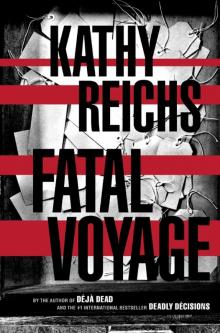 Fatal Voyage
Fatal Voyage 206 Bones
206 Bones Bones to Ashes
Bones to Ashes Terminal
Terminal Monday Mourning
Monday Mourning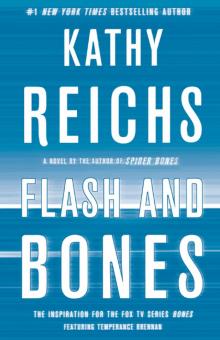 Flash and Bones
Flash and Bones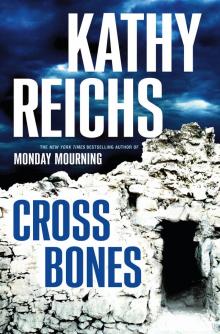 Cross Bones
Cross Bones Devil Bones
Devil Bones Break No Bones
Break No Bones Swamp Bones
Swamp Bones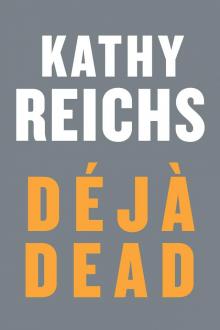 Déjà Dead
Déjà Dead Shock
Shock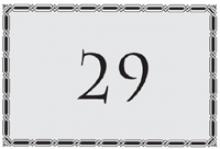 Spider Bones
Spider Bones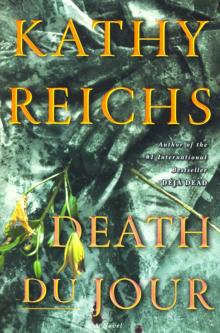 Death Du Jour
Death Du Jour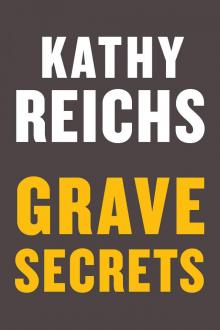 Grave Secrets
Grave Secrets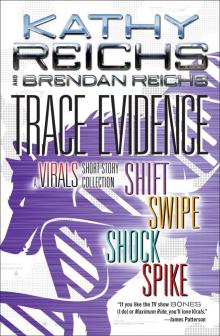 Trace Evidence: A Virals Short Story Collection
Trace Evidence: A Virals Short Story Collection Bones on Ice
Bones on Ice The Bone Code
The Bone Code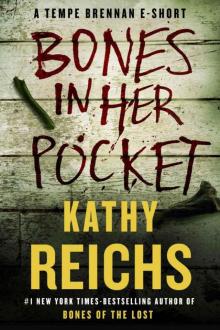 Bones in Her Pocket
Bones in Her Pocket Seizure:
Seizure: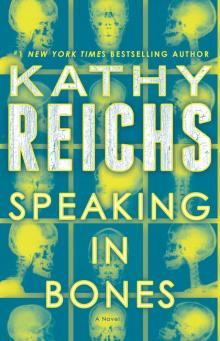 Speaking in Bones
Speaking in Bones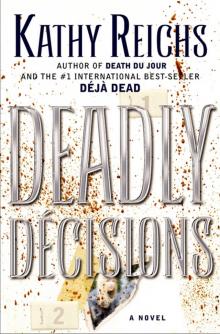 Deadly Decisions
Deadly Decisions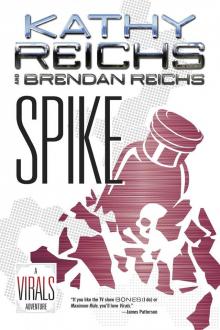 Spike
Spike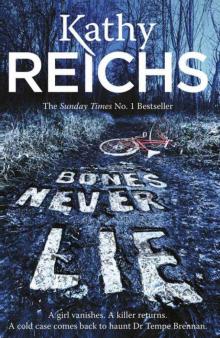 Bones Never Lie
Bones Never Lie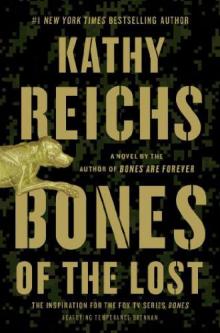 Bones of the Lost
Bones of the Lost Virals 03.5 - Swipe
Virals 03.5 - Swipe Exposure
Exposure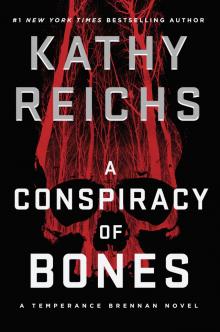 A Conspiracy of Bones
A Conspiracy of Bones Shift (tory brennan)
Shift (tory brennan)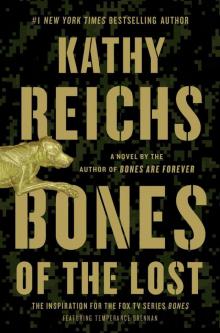 Bones of the Lost: A Temperance Brennan Novel tb-16
Bones of the Lost: A Temperance Brennan Novel tb-16 Virals tb-1
Virals tb-1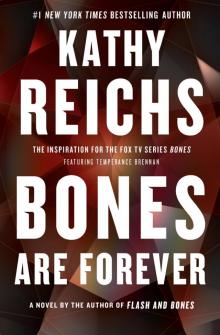 Bones Are Forever tb-15
Bones Are Forever tb-15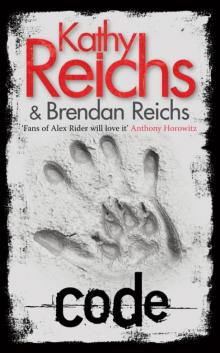 Code tb-3
Code tb-3 Seizure tb-2
Seizure tb-2 Deadly Descisions
Deadly Descisions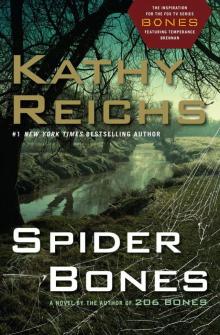 Spider Bones: A Novel
Spider Bones: A Novel